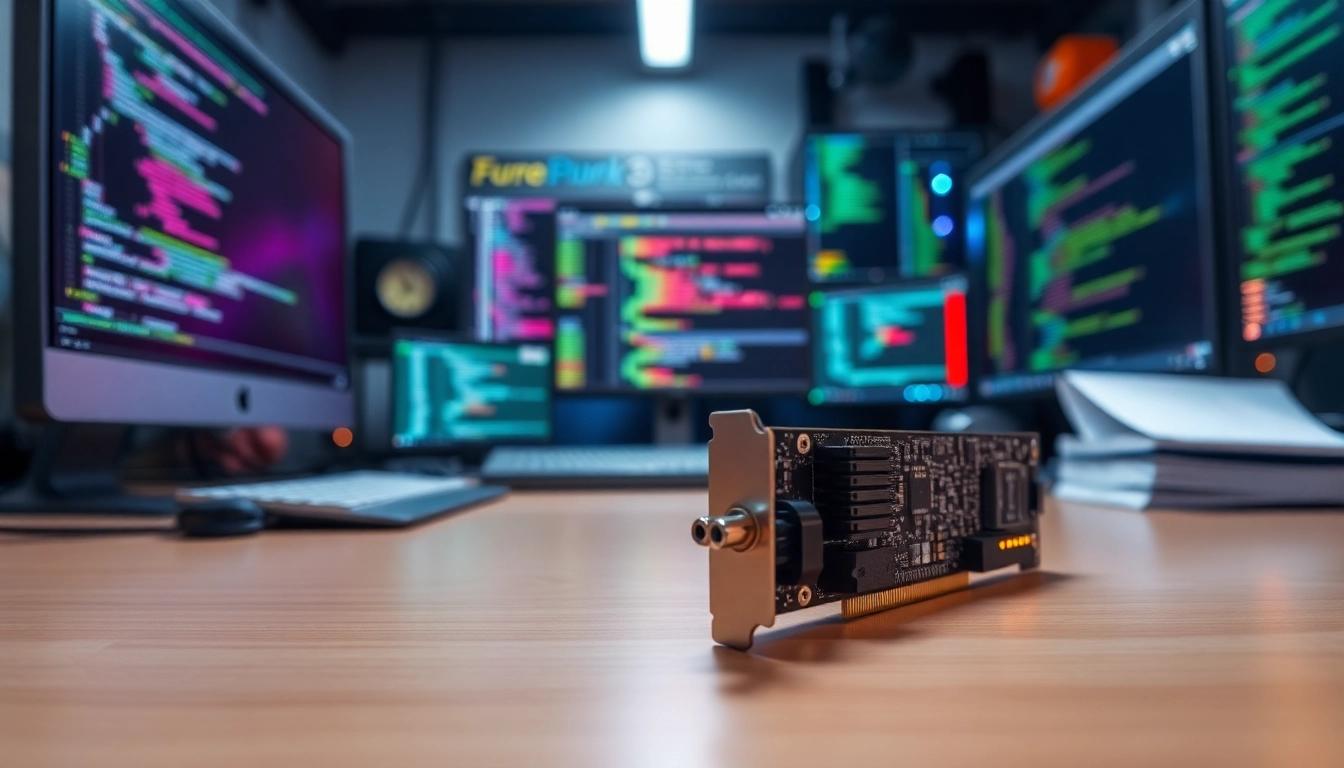Understanding DMA Firmware
What is DMA Firmware?
Direct Memory Access (DMA) firmware is a specialized software component that bypasses the CPU to enable direct access to the system memory of a computer. This functionality is crucial in high-performance computing scenarios, allowing devices to read from and write to memory without burdening the main processor. This dynamic greatly enhances the system’s efficiency, particularly in data-intensive processes such as gaming, video editing, and high-frequency trading.
How DMA Firmware Functions
DMA firmware operates by managing the data transfer process between the system memory and peripheral devices. When a DMA-capable device needs to transfer data, it sends a request to the DMA controller, which then takes control to facilitate the transfer directly to or from memory. This method eliminates the need for the CPU to be involved in every data movement, allowing for multitasking and minimizing latency.
The Importance of DMA Firmware in Modern Computing
In today’s fast-paced technology landscape, DMA firmware is pivotal. It not only enhances performance but also enables certain applications where time and speed are of the essence. For gamers, using configurable dma firmware can lead to a competitive edge, providing smoother gameplay and faster response times. Furthermore, its reliability and efficiency make it critical for data-intensive applications in various sectors, including finance and healthcare.
Choosing the Right DMA Firmware for Your Needs
Factors to Consider When Selecting DMA Firmware
When selecting the appropriate DMA firmware, several factors should be evaluated:
- Compatibility: Ensure that the firmware is compatible with your hardware and operating system.
- Performance: Look for reviews and benchmarks that highlight the performance improvements the firmware provides.
- Security Features: Assess the firmware for built-in security measures that protect against vulnerabilities.
- Customizability: Depending on your use case, the ability to customize firmware settings can be invaluable.
- Support and Community: A robust support system and an active user community can be essential for troubleshooting and enhancements.
Comparing Popular DMA Firmware Options
The market offers a range of DMA firmware options, each tailored for different use cases. Some are optimized for gaming, while others focus on data transfer speeds for enterprise applications. Performance metrics, compatibility, and user reviews can greatly influence the decision-making process. Users should consider benchmarking data to compare the capabilities of various firmware options directly.
User Reviews and Feedback on DMA Firmware
User feedback provides real-world insights into the performance and reliability of different DMA firmware solutions. Evaluative reviews typically discuss installation ease, operational stability, and any encountered issues. It is prudent to filter through user experiences, focusing on case studies that mirror one’s own hardware and use cases for a clearer perspective on expected performance.
Installing and Configuring DMA Firmware
Step-by-Step Installation Guide for DMA Firmware
Installing DMA firmware may seem complex, but following a systematic approach simplifies the process. The general steps are as follows:
- Verify Hardware: Confirm that your DMA device is correctly installed and recognized by your system.
- Download Firmware: Acquire the latest version of the DMA firmware from a trusted source.
- Prepare Environment: Ensure that your computing environment is stable and that you have administrative privileges for installation.
- Run Installation: Execute the firmware installation file and follow the on-screen instructions.
- Configuration: After installation, configure settings as needed through the firmware interface.
- Test Functionality: Validate the installation by running test scenarios to ensure that the DMAs operate as intended.
Common Configuration Settings for Optimal Performance
Optimizing configuration settings can enhance the performance of DMA firmware significantly. Key settings to consider include:
- Data Rate: Adjust the data transfer rates according to your requirements; higher rates can lead to better performance but may also increase the chance of errors.
- Timing Settings: Configure timing to match the specific application needs, whether that’s reducing latency or ensuring stability during high-demand situations.
- Buffer Sizes: Tailor buffer sizes according to the average data load to prevent overflow and ensure continuous data streams without interruptions.
- Power Management: Adjust power settings to optimize energy usage, saving costs while maintaining performance.
Troubleshooting Installation Issues with DMA Firmware
Despite following installation procedures, users may encounter issues. Common problems include:
- Device Not Recognized: Ensure that the hardware is properly installed and check for driver updates if necessary.
- Performance Issues: Revisit configuration settings and consult firmware logs to identify bottlenecks.
- Incompatibility Errors: Confirm that the chosen firmware version is aligned with the specific hardware model.
- Crash or Freeze: Review system resources and running processes that may conflict with the DMA operations.
Security Considerations When Using DMA Firmware
Identifying Vulnerabilities in DMA Firmware
The nature of DMA firmware can make it susceptible to various security threats. Identifying these vulnerabilities is the first step in bolstering protection:
- Data Breach Risks: Compromised firmware may expose sensitive system data if proper protocols are not in place.
- Unauthorized Access: Exploited vulnerabilities can allow malicious entities to access system memory arbitrarily.
- Malware Insertion: Attack vectors may lead to malware being introduced through flawed firmware that lacks proper integrity checks.
Best Practices for Securing Your DMA Firmware
Implementing best practices in security can help mitigate risks associated with DMA firmware:
- Regular Updates: Keep firmware regularly updated to patch security vulnerabilities and enhance functionality.
- Access Controls: Employ rigorous access controls to ensure only authorized personnel can modify firmware settings.
- Network Security: Ensure robust network security measures are in place to guard against external threats.
- Monitoring: Utilize monitoring tools to track data transfers and flag any anomalies that may indicate unauthorized activity.
Staying Updated with the Latest Security Patches
To maintain the integrity and security of DMA firmware, being proactive about security patches is essential. Subscribing to notifications from trusted firmware providers, participating in user forums, and following relevant security advisories are effective strategies. This vigilance can help safeguard systems against emerging threats and vulnerabilities.
Future Trends in DMA Firmware Development
Emerging Technologies Impacting DMA Firmware
Advancements in technology indicate a transformative future for DMA firmware. Innovations such as AI and machine learning are set to play significant roles:
- Adaptive Learning: Future firmware may use machine learning to adapt performance parameters dynamically based on usage patterns, offering substantial speed and efficiency improvements.
- Enhanced Security Measures: As threats become more sophisticated, integrating advanced security protocols such as end-to-end encryption and behavioral analysis will become commonplace.
- Integration with IoT: With the rising prevalence of IoT devices, DMA firmware will need to ensure seamless data transfers across connected environments, promoting interoperability and responsiveness.
Predictions for the Future of DMA Firmware
Predictions suggest that the sophistication of DMA firmware will continually evolve, potentially encompassing features such as automated configuration settings and self-optimizing algorithms. As industries invest more in automation and advanced computing capabilities, the demand for performant and secure DMA firmware will likely increase exponentially.
How to Stay Informed About DMA Firmware Innovations
Staying updated with the latest developments in DMA firmware can be achieved through various methods:
- Industry Conferences: Attending tech conferences and workshops can provide firsthand insights into the latest trends and innovations.
- Online Communities: Engaging in developer forums and user groups helps gather collective insights and share experiences with others in the field.
- Tech Publications: Subscribing to reputed technology magazines and blogs can offer timely updates and in-depth analysis regarding ongoing advancements.



